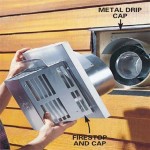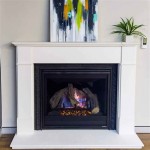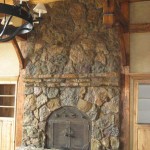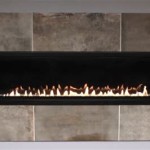Here is an article about new fireplace ideas:
New Fireplace Ideas: Modernizing Hearth and Home
The fireplace, a traditional symbol of warmth and gathering, has undergone significant transformations in recent years. No longer confined to purely functional roles, contemporary fireplaces serve as focal points, architectural statements, and technologically advanced heating solutions. This article explores innovative fireplace designs, materials, and technologies that are redefining the modern hearth.
Linear Fireplaces: Embracing Minimalism and Modernity
Linear fireplaces represent a significant departure from traditional fireplace designs. Characterized by their elongated, horizontal shape, these fireplaces offer a sleek and minimalist aesthetic that seamlessly integrates into contemporary interiors. The extended flame display creates a captivating visual impact, transforming the fireplace into a dynamic art piece.
One of the key advantages of linear fireplaces is their versatility in terms of installation. They can be incorporated into various architectural settings, including walls, room dividers, and even furniture. This adaptability makes them suitable for both new construction and renovation projects. Furthermore, linear fireplaces are available in a range of sizes, allowing homeowners to select the perfect dimensions to suit their space.
Fuel options for linear fireplaces vary, with natural gas, propane, and electric models being the most common. Gas-powered linear fireplaces provide a realistic flame appearance and efficient heating, while electric models offer the convenience of installation without the need for venting. The choice of fuel depends on the homeowner's preferences, budget, and the specific requirements of their home.
Design possibilities with linear fireplaces are virtually limitless. They can be customized with various media options, such as glass beads, river stones, and decorative logs, to create a personalized look. Framing materials also play a significant role in the overall aesthetic, with options including metal, stone, and wood. The integration of lighting can further enhance the visual appeal of the fireplace, creating a warm and inviting ambiance.
Electric Fireplaces: Convenience and Versatility
Electric fireplaces have gained popularity due to their ease of installation, versatility, and energy efficiency. Unlike traditional fireplaces, electric models do not require venting or gas lines, making them suitable for a wide range of homes and apartments. They can be easily installed by simply plugging them into a standard electrical outlet.
Modern electric fireplaces offer a realistic flame effect through the use of LED technology. Advanced models incorporate features such as adjustable flame colors, brightness levels, and crackling sound effects, mimicking the ambiance of a traditional wood-burning fireplace. This allows homeowners to enjoy the visual appeal of a fireplace without the associated maintenance and safety concerns.
Electric fireplaces are available in a variety of styles, including wall-mounted, freestanding, and insert models. Wall-mounted electric fireplaces offer a space-saving solution for smaller rooms, while freestanding models provide a portable option that can be easily moved from one room to another. Insert models are designed to be installed into existing fireplace openings, providing a convenient way to update an outdated fireplace.
An additional benefit of electric fireplaces is their energy efficiency. Most models utilize LED lighting, which consumes significantly less energy than traditional incandescent bulbs. Furthermore, electric fireplaces can operate with or without heat, allowing homeowners to enjoy the flame effect throughout the year without raising the temperature of the room. This makes them a cost-effective and environmentally friendly heating solution.
Technology continues to enhance the functionality of electric fireplaces. Many models now include features such as remote control operation, adjustable thermostats, and programmable timers. Some even offer smart home integration, allowing homeowners to control the fireplace using their smartphone or voice commands. These advanced features provide added convenience and control over the fireplace's operation.
Outdoor Fireplaces: Extending Living Spaces Beyond the Interior
Outdoor fireplaces are transforming patios and backyards into inviting extensions of the home. These outdoor amenities provide warmth, ambiance, and a focal point for outdoor gatherings. They allow homeowners to enjoy their outdoor spaces year-round, creating a cozy and comfortable environment for relaxation and entertainment.
Outdoor fireplaces are available in a range of styles, from traditional masonry fireplaces to modern prefabricated units. Masonry fireplaces offer a classic and durable option, while prefabricated units provide a more cost-effective and easier-to-install solution. The choice of style depends on the homeowner's aesthetic preferences, budget, and the overall design of their outdoor space.
Fuel options for outdoor fireplaces include wood, natural gas, and propane. Wood-burning fireplaces provide a traditional and rustic feel, while gas-powered fireplaces offer the convenience of push-button ignition and adjustable flame height. Propane fireplaces are portable and can be easily moved to different locations within the outdoor space.
Considerations for outdoor fireplace design include location, size, and materials. The location of the fireplace should be carefully chosen to maximize its functionality and visual appeal. The size of the fireplace should be proportionate to the size of the outdoor space, and the materials should be weather-resistant and durable. Common material choices include brick, stone, concrete, and metal.
Outdoor fireplaces can be further enhanced with additional features such as seating areas, outdoor kitchens, and landscaping. Integrating the fireplace into the overall landscape design creates a cohesive and inviting outdoor living space. Proper ventilation is crucial for outdoor fireplaces to ensure safe and efficient operation.
Safety should always be a top priority when using an outdoor fireplace. Homeowners should follow all manufacturer's instructions and local regulations regarding fireplace installation and operation. Keeping a fire extinguisher nearby and supervising the fireplace at all times are essential safety precautions.
Smart Home Integration: Fireplaces in the Connected Age
The integration of smart home technology into fireplaces is rapidly becoming a standard feature. Smart fireplaces offer homeowners unprecedented control and convenience, allowing them to manage their fireplace settings remotely and integrate it seamlessly into their smart home ecosystem.
Smart fireplaces typically connect to a home's Wi-Fi network, enabling users to control them via a smartphone app or voice commands. Through the app, homeowners can adjust flame height, temperature, and timer settings, as well as monitor the fireplace's status and energy consumption. Voice control integration allows for hands-free operation, making it even easier to manage the fireplace.
One of the key benefits of smart fireplaces is the ability to create custom schedules and routines. Homeowners can program the fireplace to turn on and off automatically at specific times, ensuring that their home is warm and inviting upon their arrival. They can also integrate the fireplace with other smart home devices, such as thermostats and lighting systems, to create a coordinated and energy-efficient environment.
Smart fireplaces often include advanced safety features, such as automatic shut-off capabilities and carbon monoxide detectors. These features provide homeowners with added peace of mind, ensuring that the fireplace is operating safely and efficiently. Some smart fireplaces also send notifications to the homeowner's smartphone if any issues are detected.
The future of fireplaces is undoubtedly connected. As smart home technology continues to evolve, fireplaces will become even more integrated into the home's overall ecosystem. This will lead to greater energy efficiency, enhanced convenience, and a more personalized user experience.
Sustainable Fireplace Options: Environmental Responsibility
With growing environmental concerns, sustainable fireplace options are gaining traction. These options focus on reducing emissions, utilizing renewable fuels, and minimizing the environmental impact of fireplace operation. Homeowners are increasingly seeking fireplaces that align with their values and contribute to a more sustainable lifestyle.
One of the key sustainable alternatives is the use of bioethanol fireplaces. Bioethanol is a renewable fuel derived from plant-based sources, such as corn and sugarcane. It burns cleanly, producing only water vapor and carbon dioxide, with minimal emissions of harmful pollutants. Bioethanol fireplaces offer a stylish and environmentally friendly heating solution.
Electric fireplaces, as previously discussed, can also be considered a sustainable option when powered by renewable energy sources, such as solar or wind power. By utilizing electricity generated from clean sources, electric fireplaces can significantly reduce their carbon footprint.
For homeowners who prefer traditional wood-burning fireplaces, there are steps they can take to reduce their environmental impact. Using seasoned firewood helps to ensure a cleaner burn with fewer emissions. Also, choosing wood from sustainably managed forests helps conserve natural resources. Proper fireplace maintenance, including regular cleaning and inspections, can also improve efficiency and reduce emissions.
Another sustainable option is the use of pellet stoves. Pellet stoves burn compressed wood pellets, which are a renewable and readily available fuel source. Pellet stoves are highly efficient and produce very little smoke or ash. They also offer precise temperature control and automatic feeding systems, making them a convenient and environmentally friendly heating solution.
The materials used in fireplace construction can also contribute to sustainability. Using recycled or reclaimed materials, such as reclaimed brick or salvaged wood, can reduce the environmental impact of the fireplace. Choosing local materials also helps to minimize transportation emissions.
Ultimately, the choice of a sustainable fireplace option depends on the homeowner's individual preferences, budget, and environmental goals. By considering these factors, homeowners can select a fireplace that provides warmth and ambiance while also minimizing its impact on the environment.

40 Fabulous Fireplace Design Ideas For Any Budget Or Style

Warm Up To A New Fireplace Design

New This Week 9 Fantastic Fireplace Design Ideas

Red Hot Fireplace Ideas

Live Beautifully Before After A Beautiful Kitchen Home Fireplace Living Room

Best Modern Fireplace Designs Blaze

Fireplace Design Ideas Materials Colors Styles In 2024 Bodaq

50 Fireplace Ideas To Give Your Room That Special Spark

36 Fireplace Decor Ideas Modern Mantel

40 Fabulous Fireplace Design Ideas For Any Budget Or Style








